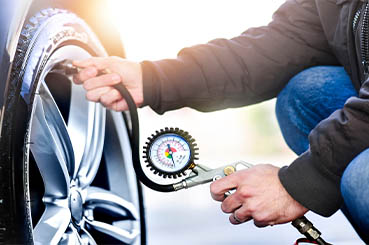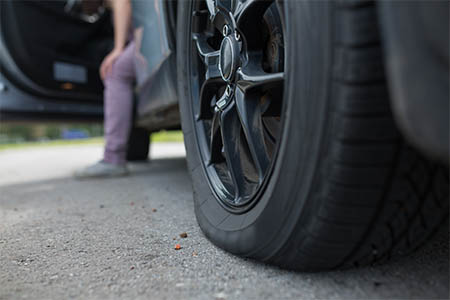
Keeping your tyres properly inflated is not only crucial for your safety on the road but also for the longevity of your tyres and the fuel efficiency of your vehicle. Yet, many drivers overlook this simple maintenance task.
In this guide, we’ll walk you through the steps of how to put air in your tyres correctly, ensuring your vehicle runs smoothly and safely.
Understanding Tyre Pressure
Before we dive into the process, it’s essential to understand why maintaining the correct tyre pressure is so important. Tyre pressure directly impacts your vehicle’s handling, braking, and fuel efficiency. When your tyres are underinflated, they generate more heat, which can lead to premature wear and even tyre blowouts. On the other hand, overinflated tyres can result in reduced traction and a harsher ride.
Gathering the Necessary Tools
To get started, you’ll need a few basic tools:
– Tyre pressure gauge: This tool allows you to measure the current air pressure in your tyres accurately.
– Air compressor or air pump: You’ll need a reliable source of compressed air to inflate your tyres.
– Owner’s manual: Refer to your vehicle’s manual to find the recommended tyre pressure for your specific make and model.
Locating the Recommended Tyre Pressure
As mentioned earlier, the ideal tyre pressure for your vehicle can be found in your owner’s manual. It’s important to note that the recommended pressure may vary depending on factors such as load capacity and driving conditions. You can also typically find this information on a sticker located inside the driver’s side door jamb or on the inside of the fuel filler flap.
Checking the Current Tyre Pressure
Before adding air to your tyres, you’ll want to check their current pressure using a tyre pressure gauge. Remove the valve cap from the tyre stem and firmly press the gauge onto the valve stem. The gauge will provide a reading of the current pressure in PSI (pounds per square inch).
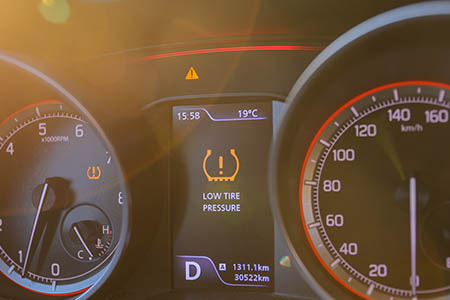
Adding Air to Your Tyres
Once you’ve determined that your tyres need additional air, it’s time to inflate them to the proper pressure. Here’s how to do it:
1. Locate a petrol station with an air compressor: Many petrol stations offer free or low-cost access to air compressors.
2. Park your vehicle close to the air pump: Position your vehicle so that the air hose can reach all four tyres without difficulty.
3. Remove the valve cap: Unscrew the valve cap from the tyre stem and set it aside in a safe place.
4. Attach the air hose to the valve stem: Press the nozzle of the air hose firmly onto the valve stem to create a seal.
5. Inflate the tyre: Use the air compressor to add air to the tyre gradually. Check the pressure periodically with your tyre pressure gauge to ensure you don’t overinflate.
6. Check the pressure: Once you’ve reached the recommended pressure, remove the air hose and check the tyre pressure again with your gauge to verify accuracy.
7. Replace the valve cap: Screw the valve cap back onto the tyre stem securely.
Performing a Final Check
After inflating your tyres, it’s a good idea to perform a final inspection to ensure everything is in order. Walk around your vehicle and visually inspect each tyre to ensure there are no signs of damage or leaks. Additionally, you can give each tyre a gentle kick to check for proper inflation.
Maintaining the correct tyre pressure is a simple yet crucial aspect of vehicle maintenance. By following the steps outlined in this guide, you can ensure that your tyres are properly inflated, leading to improved safety, fuel efficiency, and overall performance on the road. Make it a habit to check your tyre pressure regularly, and you’ll enjoy a smoother and safer driving experience for years to come.
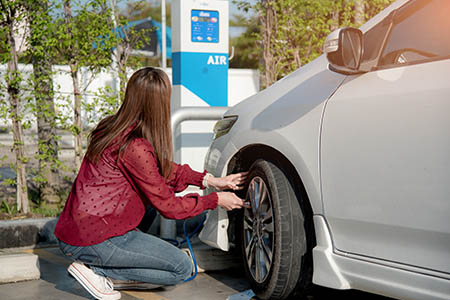
FAQ’s
1. Why is maintaining tyre pressure important?
Maintaining tyre pressure is crucial for several reasons. Firstly, it ensures optimal vehicle performance, including better fuel efficiency and handling. Secondly, properly inflated tyres are safer as they provide better traction, reducing the risk of accidents, especially in adverse weather conditions. Additionally, correct tyre pressure helps to extend the lifespan of the tyres, saving you money on replacements in the long run.
2. What are the dangers of driving with underinflated tyres?
Driving with underinflated tyres can pose significant dangers. Firstly, it increases the risk of blowouts, especially at high speeds, which can lead to loss of control and accidents. Secondly, underinflated tyres cause uneven tread wear, reducing their lifespan and compromising safety. Moreover, it affects vehicle handling and braking distance, particularly in emergency situations, making accidents more likely.
3. How often should I check my tyre pressure?
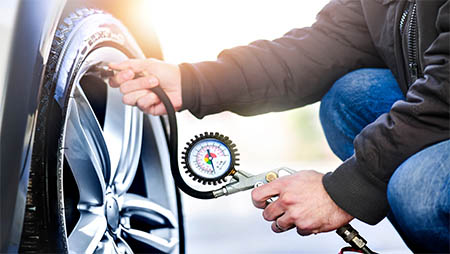
It’s recommended to check your tyre pressure at least once a month or before embarking on a long journey. Additionally, it’s essential to inspect tyre pressure whenever there are significant temperature changes, as this can affect tyre pressure. Regular checks help to ensure that your tyres are properly inflated, maintaining safety and performance on the road.
4. Can overinflated tyres be dangerous too?
Yes, overinflated tyres can be dangerous as well. They can lead to reduced traction and handling, especially on wet or slippery roads, increasing the risk of accidents. Overinflation also causes uneven tyre wear, potentially leading to premature tyre failure. It’s important to follow the manufacturer’s recommended tyre pressure guidelines to avoid both underinflation and overinflation.
5. How can I maintain proper tyre pressure?
To maintain proper tyre pressure, start by regularly checking the pressure using a tyre pressure gauge. Refer to your vehicle’s manual or the sticker on the driver’s side door jamb for the recommended pressure. If needed, add air to the tyres using an air compressor at a petrol station or service centre. Additionally, consider investing in a quality tyre pressure monitoring system (TPMS) for real-time pressure monitoring and alerts. Regular tyre rotations and alignments also help to ensure even wear and optimal performance.
